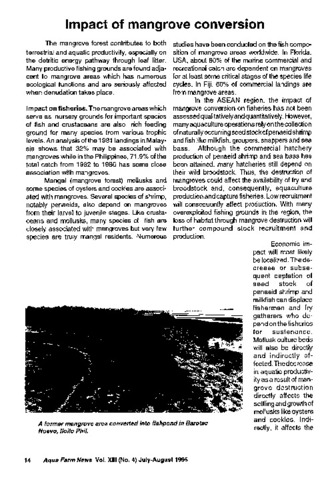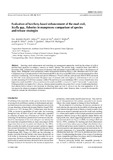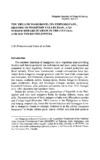Identifying mangrove areas for fisheries enhancement; population assessment in a patchy habitat
| dc.contributor.author | Lebata, Ma. Junemie Hazel | |
| dc.contributor.author | Walton, Mark E. | |
| dc.contributor.author | Biñas, Joseph B. | |
| dc.contributor.author | Primavera, Jurgenne | |
| dc.contributor.author | Le Vay, Lewis | |
| dc.date.accessioned | 2015-05-18T06:24:07Z | |
| dc.date.available | 2015-05-18T06:24:07Z | |
| dc.date.issued | 2012 | |
| dc.identifier.citation | Lebata, M. J. H., Walton, M. E., Biñas, J. B., Primavera, J. H., & Le Vay, L. (2012). Identifying mangrove areas for fisheries enhancement; population assessment in a patchy habitat. Aquatic Conservation: Marine and Freshwater Ecosystems, 22(5), 652-664. | en |
| dc.identifier.issn | 1052-7613 | |
| dc.identifier.uri | http://hdl.handle.net/10862/2227 | |
| dc.description.abstract |
| en |
| dc.description.sponsorship | This research was supported by the European Commission, INCO DC grant (contract ECA4-CT-2001-10022). | en |
| dc.language.iso | en | en |
| dc.publisher | Wiley | en |
| dc.subject | Decapoda | en |
| dc.subject | Scylla olivacea | en |
| dc.subject | Philippines | en |
| dc.subject | Philippines, Panay I. | |
| dc.title | Identifying mangrove areas for fisheries enhancement; population assessment in a patchy habitat | en |
| dc.type | Article | en |
| dc.identifier.doi | 10.1002/aqc.2235 | |
| dc.citation.volume | 22 | |
| dc.citation.issue | 5 | |
| dc.citation.spage | 652 | |
| dc.citation.epage | 664 | |
| dc.citation.journalTitle | Aquatic Conservation: Marine and Freshwater Ecosystems | en |
| dc.subject.asfa | carrying capacity | en |
| dc.subject.asfa | nature conservation | en |
| dc.subject.asfa | economics | en |
| dc.subject.asfa | fisheries | en |
| dc.subject.asfa | food | en |
| dc.subject.asfa | growth rate | en |
| dc.subject.asfa | habitats | en |
| dc.subject.asfa | islands | en |
| dc.subject.asfa | mangrove swamps | en |
| dc.subject.asfa | mangroves | en |
| dc.subject.asfa | models | en |
| dc.subject.asfa | mortality | en |
| dc.subject.asfa | mortality causes | en |
| dc.subject.asfa | natural resources | en |
| dc.subject.asfa | recruitment | en |
| dc.subject.asfa | sampling | en |
| dc.subject.asfa | total mortality | en |
| dc.identifier.essn | 1099-0755 | |
| local.subject | Ecosystem services | en |
| local.subject | Growth | en |
| local.subject | Mangroves | en |
| local.subject | Mark-recapture | en |
| local.subject | Mortality | en |
| local.subject | Population estimates | en |
| local.subject | Restocking | en |
| local.subject | Scylla olivacea | en |
| local.subject | SEAFDEC/AQD | en |
| local.subject | Survival | en |
| dc.subject.sdg | SDG 2 - Zero hunger | |
| dc.subject.sdg | SDG 13 - Climate action | |
| dc.subject.sdg | SDG 14 - Life below water | |
| dc.subject.sdg | SDG 15 - Life on land | |
| dc.subject.sdg | SDG 16 - Peace, justice and strong institutions | |
| dc.subject.sdg | SDG 17 - Partnerships for the goals |
Files in this item
| Files | ขนาด | รูป | View |
|---|---|---|---|
|
There are no files associated with this item. |
|||
รายการนี้ปรากฏใน (s)
-
Journal Articles [1256]
These papers were contributed by Department staff to various national and international journals.




